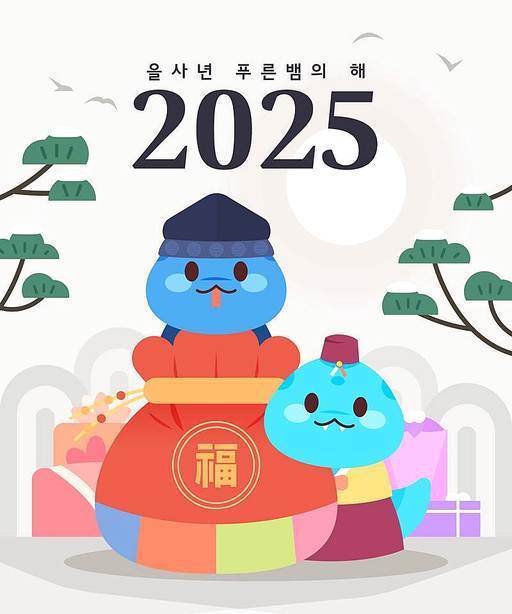Heavenly Stems and Earthly Branches System

If you’re Korean, I bet you must have heard of the Heavenly Stems and Earthly Branches. This system originated in ancient China as a way to count and record years, and it’s still used today in both China and Korea.
But I’ve noticed that many Koreans don’t really know how the calculation works, so today, I’ll give you a simple explanation.
There are 10 Heavenly Stems (天干):
Jia (甲), Yi (乙), Bing (丙), Ding (丁), Wu(戊), Ji (己), Geng (庚), Sin(辛), Ren (壬), Gui (癸)
And there are 12 Earthly Branches (地支):
Zi (子), Chou (丑), In(寅), Mou (卯), Chen (辰), Si (巳), Wu (午), Wei (未), Shen (申), You (酉), Xu (戌), Hai (亥)
When these Heavenly Stems and Earthly Branches are paired in order, the 10 stems and 12 branches rotate together, forming a 60-year cycle, which is called Sexagenary Cycle (甲子).
That’s why when a person turns 60, we call it “還甲”, meaning “returning to the Jia ,” since the cycle has come full circle. In the ancient days, very few people lived to 60, so completing this one cycle was considered a full life.
There are also 12 zodiac animals:
Rat(鼠), Ox(牛), Tiger(虎), Rabbit(兔), Dragon(龙), Snake(蛇), Horse(马), Goat(羊), Monkey(猴), Rooster(鸡), Dog(狗), and Pig(猪).
Each animal corresponds to an Earthly Branch:
Zi (子)-Rat, Chou (丑)-Ox, Ren (寅)-Tiger, Mou (卯)-Rabbit, Chen (辰)-Dragon, Si(巳)-Snake,
Wu (午)-Horse, Wei (未)-Goat, Shen (申)-Monkey, You (酉)-Rooster, Xu (戌)-Dog, Hai (亥)-Pig.
Chinese kids start memorizing this around the 3rd grade!
Once you know this rule, you can easily figure out the Heavenly Stem and Earthly Branch for any year.
The Heavenly Stems can also correspond to numbers:
Jia (甲)=4, Yi (乙)=5, Bing (丙)=6, Ding (丁)=7, Wu (戊)=8, Ji (己)=9, Geng (庚)=0, Xin (辛)=1, Ren (壬)=2, Gui (癸)=3
For example, the year 2026 ends with a 6, so the Heavenly Stem is Bing (丙). The zodiac sign for that year is Horse, which corresponds to Wu (午). Put them together, and you get Bing Wu year (丙午年).
The following year, 2027, ends with a 7, so the Heavenly Stem is Ding (丁). The zodiac sign is Goat, corresponding to Wei (未). Combine them, and you get Ding Wei year (丁未年).
What do you think? It’s actually quite simple, isn’t it?
다들 한 번쯤 천간지지(天干地支) 를 들어본 적 있죠? 천간지지는 중국 고대에서 유래된 연도를 계산하는 방법인데요. 지금도 중국과 한국 모두에서 여전히 사용되고 있습니다.
그런데 제가 보니까 많은 한국 분들이 어떻게 계산되는지는 잘 모르시더라고요. 그래서 오늘은 간단하게 설명해드릴게요.
천간(天干)은 10개예요:
갑(甲), 을(乙), 병(丙), 정(丁), 무(戊), 기(己), 경(庚), 신(辛), 임(壬), 계(癸)
‘갑’은 천간(天干) 순서에서 1등이라, 자연스럽게 권력이나 지위가 높은 사람을 상징하게 됐어요. 그래서 한국에서는 자기 위치를 내세워 억지 부리거나 으스대는 행동을 ‘갑질한다’고 부르게 된 거죠. ㅋㅋㅋ
지지(地支)는 12개예요:
자(子), 축(丑), 인(寅), 묘(卯), 진(辰), 사(巳), 오(午), 미(未), 신(申), 유(酉), 술(戌), 해(亥)
이 천간과 지지를 차례대로 짝지어 사용하면, 10개의 천간과 12개의 지지가 서로 돌아가면서 60년을 한 주기(갑자·甲子) 로 이루게 됩니다. 그래서 사람이 60세가 되면 “환갑(還甲)” — 다시 ‘갑(甲)’으로 돌아온다는 뜻으로 부르게 된 거예요. 옛날에는 60세까지 사는 사람이 많지 않았기 때문에, 이 한 바퀴면 인생을 다 산 셈이라고 생각했대요. ㅋㅋㅋㅋ
띠도 12가지예요.
쥐, 소, 호랑이, 토끼, 용, 뱀, 말, 양, 원숭이, 닭, 개, 돼지.
각 띠는 지지와 이렇게 짝이 맞아요:
자(子)-쥐, 축(丑)-소, 인(寅)-호랑이, 묘(卯)-토끼, 진(辰)-용, 사(巳)-뱀, 오(午)-말, 미(未)-양, 신(申)-원숭이, 유(酉)-닭, 술(戌)-개, 해(亥)-돼지.
이건 중국에서는 초등학교 3학년 때부터 외운답니다! ㅋㅋㅋㅋ
이 규칙만 알면, 해당 해의 천간지지를 바로 계산할 수 있어요.
천간은 숫자와도 대응할 수 있는데요:
갑(甲)=4, 을(乙)=5, 병(丙)=6, 정(丁)=7, 무(戊)=8, 기(己)=9, 경(庚)=0, 신(辛)=1, 임(壬)=2, 계(癸)=3
예를 들어 2026년은 끝자리가 6, 그러니까 천간은 병(丙), 그리고 그해의 띠는 말, 그럼 지지는 오(午), 둘을 합치면 “병오년(丙午年)” 이 되는 거죠.
그다음 해인 2027년은 끝자리가 7, 그러니까 천간은 정(丁), 그리고 그해의 띠는 양, 그럼 지지는 미(未), 둘을 합치면 “정미년(丁未年)” 이 되는 거예요.
어떠세요? 생각보다 정말 간단하죠?ㅋㅋㅋㅋ